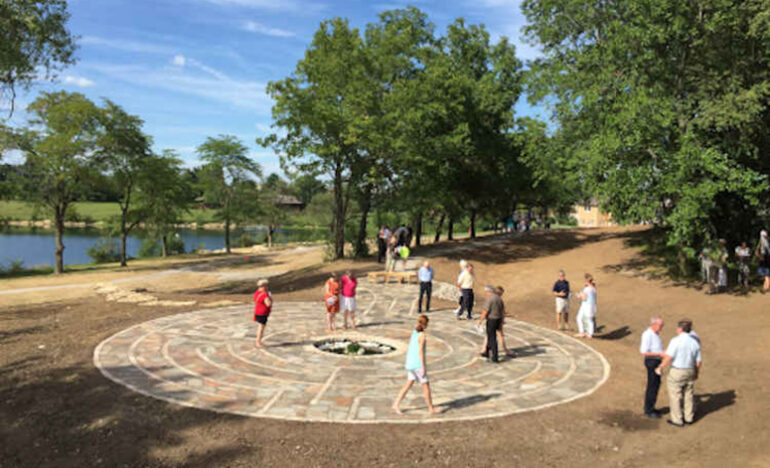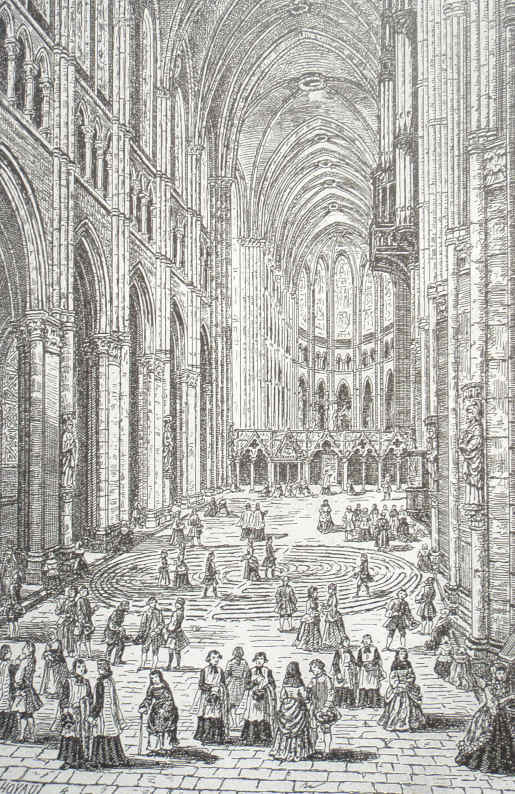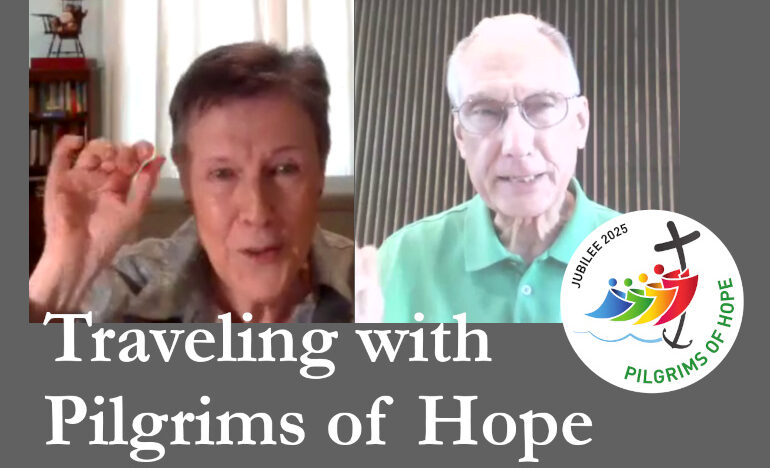Walking the Labyrinth: A Contemplative Practice Part 1

By Kathy Keary
Part 1 of a 3 Part Series. | Read Part 2 here. | Read Part 3 here.
To honor World Labyrinth Day, which is this Saturday May 2, our series, “An Invitation to Something New: The Contemplative Life,” will turn its attention to walking the labyrinth, one of my favorite types of contemplative prayer.
This article will serve as an introduction giving you a brief background as well as delving into the practice as an exercise in mindfulness. Our next article will explore the other elements involved in walking the labyrinth. A third article will deal specifically with walking a specific type of labyrinth, a reconciliation labyrinth, which is the type we have at Precious Blood Renewal Center in Liberty, Missouri.
I am intrigued that so many of the contemplative practices date back to ancient times. This also holds true for the labyrinth, which was found in diverse cultures throughout history dating back to 4500 B.C. or perhaps even earlier. This speaks to the universal truth that in all ages the Sacred One has drawn humanity into union with the divine and into a deep awareness of the presence of the Indwelling Spirit in each person.
I am awed by the words of Thomas Merton in No Man is an Island: “If we have God dwelling within us, making our souls His paradise, then the world around us can also become for us what it was meant to be for Adam — his paradise.”

The labyrinth is a metaphor for a journey to the center of our deepest self and back out with a broadened understanding of who we are. It is often confused with a maze, a left brain task requiring a logical, sequential, and analytical mindset. The labyrinth is a right brain activity utilizing intuition, creativity, and imagery. A maze is a problem to be solved with twists and turns and blind alleys. A labyrinth is one path with no blind alleys. A maze offers many choices whereas a labyrinth only offers the choice of whether you intend to journey through it or not. Your active mind is called upon when walking a maze in order to solve the problems. In contrast, your passive receptive mindset is the invited guest in walking the labyrinth.
Walking the labyrinth is an exercise in mindfulness calling us to be present in the moment. That is often easier said than done; however, there are tools we can use to silence the chatter so prevalent in our minds. One way is to focus on our breathing. Give it a try. Notice when you focus on your breathing, the incessant monologue that often plagues our minds is released leaving us with a sense of calm and being present in the here and now.
Some people find it helpful to align the pace of their walking with the pace of their breath. In the words of Thich Nhat Hanh, a Buddhist monk: “Every breath we take, every step we make, can be filled with peace, joy and serenity. We need only to be awake, alive in the present moment.”
So much of the chatter that goes on in our heads is about sorrow or regrets about the past or worries about the future. It is emotionally and spiritually healing to turn that off and connect with life in the present moment. Jean Pierre De Caussade, an 18th century Jesuit, described being in the present moment as a sacrament: “The Sacrament (of the Present Moment) and the reason it should be ranked among the classics of Christian devotion is its ability to simply and profoundly to lead us to God.”
a labyrinth is …
a walking meditation
a crucible of change
a watering hole for the spirit
a path of prayer
and a mirror of the soul— Lauren Artress, Founder of Veriditas
It is advisable to have in mind the technique you will use when walking the labyrinth that facilitates being present in the moment. You may want to call to mind a simple mantra as a way to refocus the activity at hand such as “Be still and know,” or simply, “Be still.” You may decide to choose to bring to mind one word when you realize your mind is wondering such as “center” or “God” or “Spirit.”
Bringing an image to mind such as a spiral or a heart or focusing on your steps may help you to keep your focus on the present moment. Thich Nhat Hanh recommends focusing on the soles of your feet. I typically focus on the path right in front of me being careful not to gaze ahead of where I am walking.
No matter which technique you use to refocus your attention, it is key to refrain from repeating the technique over and over again. Use the technique only when you realize that your mind has drifted.
Stay tuned for our next article where we will explore other elements of walking the labyrinth.
Note: New articles in this series will be posted to the website every Monday and Wednesday. Full series can be found here: An Invitation to Something New: The Contemplative Life. On Thursday’s we’ll send an email to remind you of the articles.
[Kathy Keary, a Precious Blood Companion and spiritual director, holds a master’s degree in theological studies and is a graduate of the Atchison Benedictine’s Sophia Center’s Souljourners Program, an intense study of spirituality and spiritual direction. Kathy believes that the divine is present and active in all of life and encourages others to be awakened to the God in all including the divine within. She enjoys accompanying others on their journey to wholeness discovering the person they were created to be.]
Image at top is the Reconciliation Labyrinth on the campus of Precious Blood Renewal Center, Liberty, Missouri.
Labyrinths for Our Time
In the video above, the world’s preeminent labyrinth historian, Jeff Saward, talks about the appearance of labyrinths over 4000 years ago and their ancient use in Europe, Africa, the Far East, the Northern Isles and the Americas. The Rev. Dr. Cheryl F. Dudley, a pastor of the American Baptist Churches, comments on the nature of walking labyrinths as a group, joining together with others in community as a joyous experience.
This is an excerpt from The Labyrinth Society‘s DVD “Labyrinths for Our Time.”
Related

Pilgrims of Hope, Episode 6: Walking with Cancer Survivors
Hosted by Fr. Ron Will, C.PP.S.
We are talking with people who find hope amid difficult circumstances or bring hope to others. In this episode, Kathy Keary talks about how centering prayer, journaling and other spiritual practices helped her cope with two life threatening health issues.

The Rollercoaster Torture
An Assembling God’s Puzzle video
By Fr. Garry Richmeier, C.PP.S.
Life is full of ups and downs, like a roller coaster, and that fact is a piece of life’s puzzle that we must deal with. Depending on how we deal with it, it can be torture, or it can be simply another difficult aspect of life to be navigated. How do we avoid the torture?
Categories
Assembling God's Puzzle Coffee with Padre Cooking & Spirituality Encounters of the 4th Kind Family Matters Reflections on the Eucharsitic Prayers Spiritual Resources Taize Prayers The Contemplative Life Traveling with Pilgrims of Hope Uncategorized Videos Week of Prayer for Uhristian Unity When you need a little help
